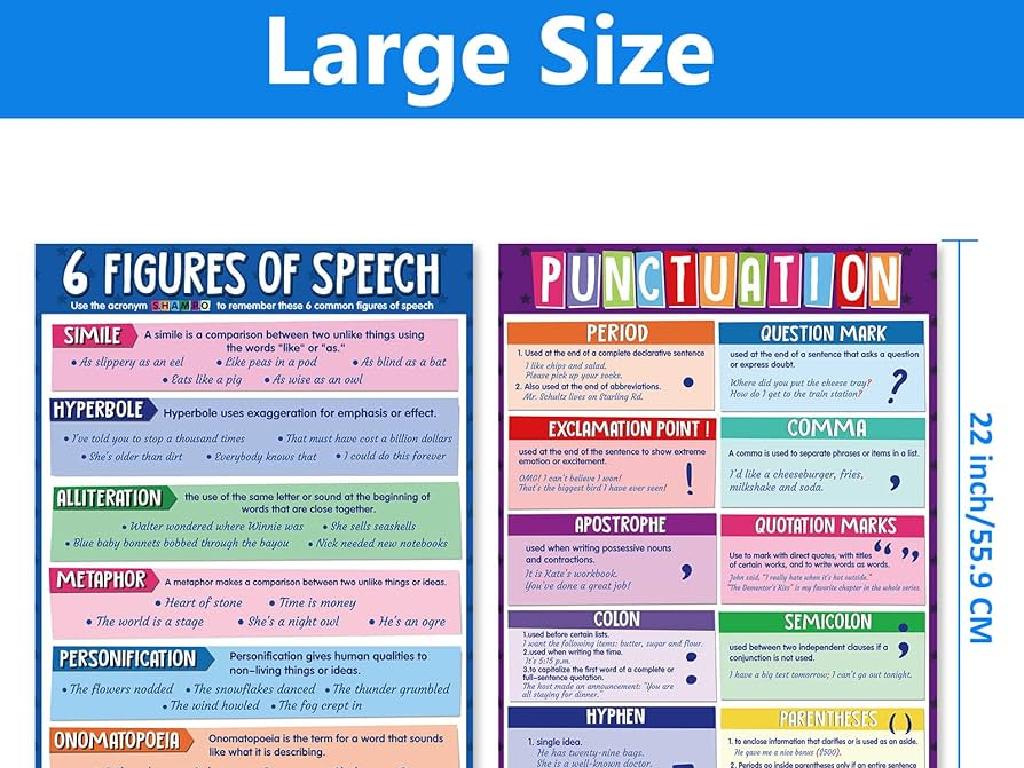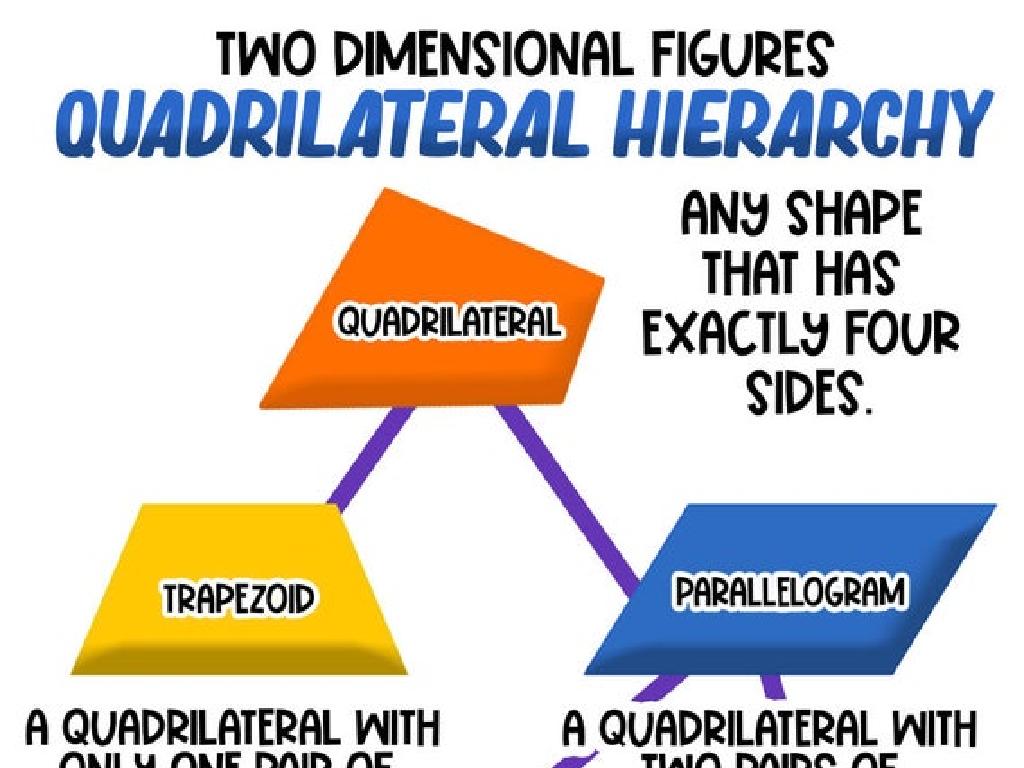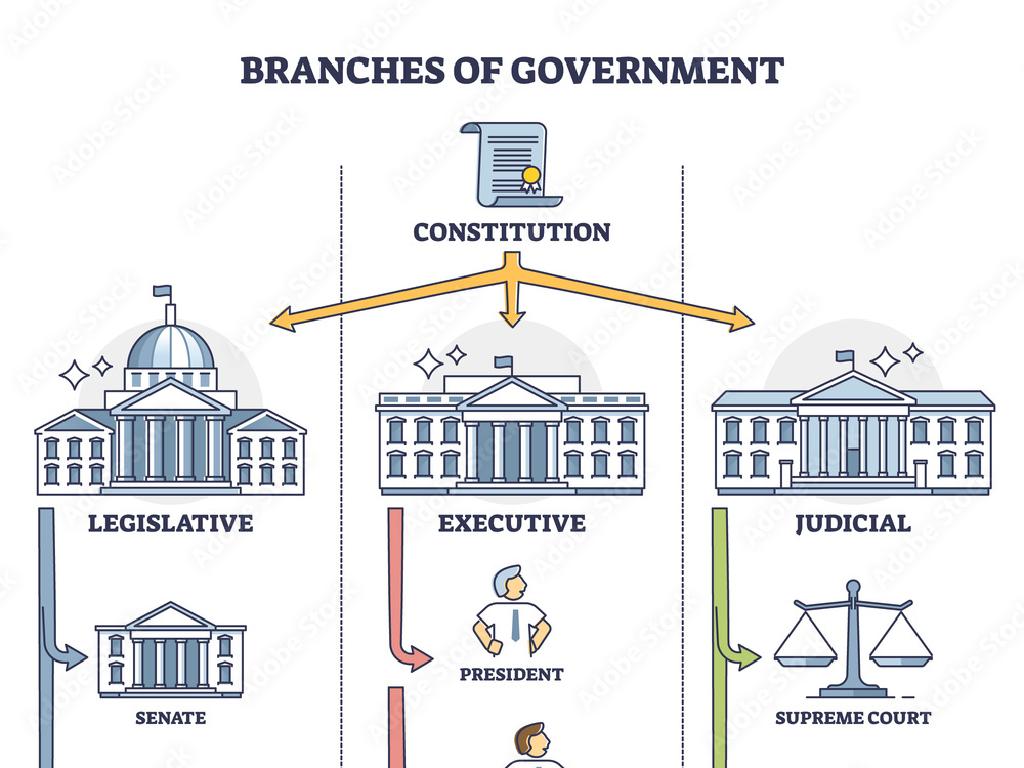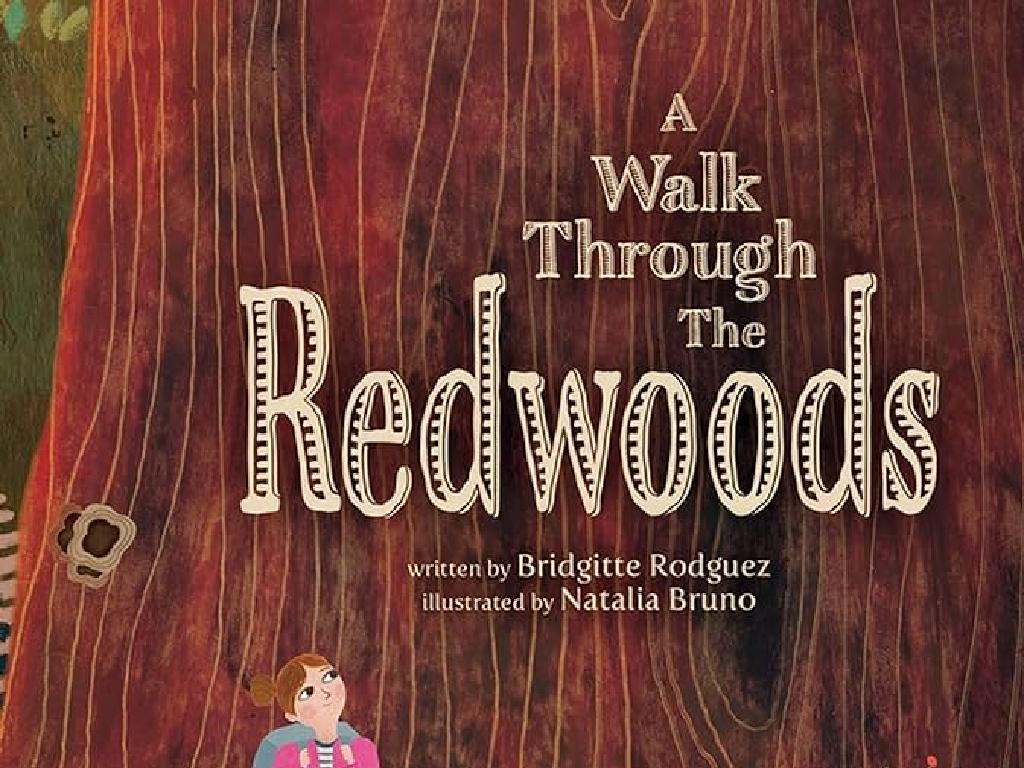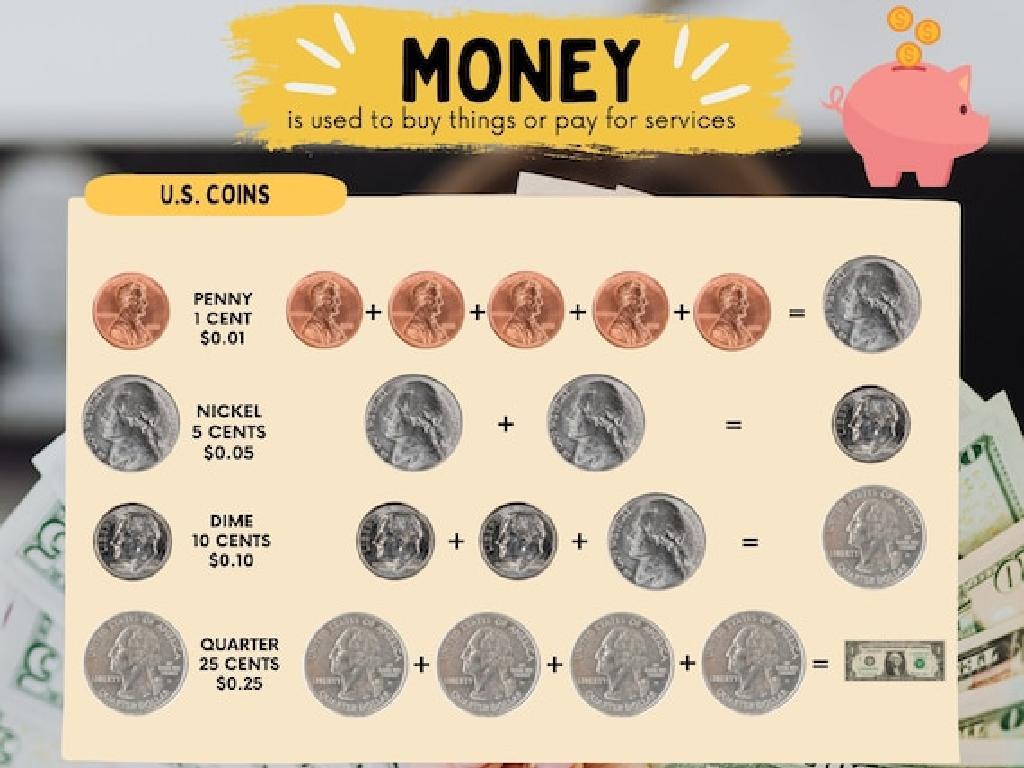Time And Clocks: Word Problems
Subject: Math
Grade: First grade
Topic: Time
Please LOG IN to download the presentation. Access is available to registered users only.
View More Content
Welcome to Telling Time!
– Greetings and introduction
– Today’s topic: Time and Clocks
– Importance of understanding time
– Knowing time helps us schedule our day
– Fun with time word problems
– We’ll solve puzzles about hours and minutes
|
Begin the class with a warm welcome to set a positive tone. Introduce the concept of time and clocks, emphasizing its importance in everyday life, such as knowing when to wake up, when to go to school, and when it’s lunchtime. Explain that understanding time is a skill that will help them be punctual and responsible. Engage the class with interactive word problems that involve clocks and time, making the learning process enjoyable. Encourage students to think about how they use time in their daily routines and share examples.
Understanding Time
– Time tracks events
– Time helps us know when things happen, like school or bedtime.
– Time shown by clocks and more
– We can see time on clocks, watches, or sundials in the garden.
– Time in seconds, minutes, hours
– Smallest is seconds, then minutes, and biggest is hours.
– Why time is important
|
This slide introduces the concept of time to first graders. Begin by explaining that time is a way to measure when things happen, from daily activities to special events. Show different instruments that can tell time, like clocks, watches, and sundials, and explain that they can see these in their homes or schools. Discuss the units of time measurement, emphasizing the progression from seconds to minutes to hours. Explain that understanding time helps us organize our day, from knowing when to wake up, when it’s lunchtime, to when it’s time to go to bed. Use simple, relatable examples to make the concept clear and encourage students to share how they use time in their daily lives.
Learning the Parts of a Clock
– Clocks display numbers 1 to 12
– Three hands: hour, minute, second
– The hour hand is shorter, while the minute hand is longer and moves faster.
– Short hand indicates the hour
– When the short hand points at 3, it is 3 o’clock.
– Long hand points to the minutes
– The long hand counts the minutes, 60 in total around the clock.
|
This slide introduces students to the basic components of an analog clock. Emphasize the numbers on the clock face and the three different hands. Explain that the shortest hand shows the hour and moves the slowest. The longest hand, which moves around the clock every hour, shows the minutes. The second hand, if present, moves the fastest, ticking every second. Use a real clock or a classroom visual aid to point out each part as you explain. Have students practice by pointing out the hour and minute hands on classroom clocks or on handouts with clock faces.
Telling Time to the Hour
– Understanding the clock hands
– Long hand points to 12 means o’clock
– Short hand shows the hour
– If the short hand is on 3, it’s 3 o’clock!
– Let’s practice telling time!
– We’ll look at different clocks and say the time
|
This slide introduces first graders to the basics of telling time to the hour. Emphasize the difference between the long hand (minute hand) and the short hand (hour hand). Explain that when the long hand is pointing to 12, it’s the start of a new hour, which we call ‘o’clock.’ Use the short hand to determine the specific hour. During class, practice with various examples by showing different clock faces and asking students to identify the time. Encourage participation and assist students in understanding the concept by using toy clocks or interactive whiteboard clocks if available.
Solving Time Word Problems
– Time helps us solve problems
– Read stories to find times
– What time did the event happen in the story?
– Understand AM and PM
– Learn the difference between morning and night times
– Practice with real-life examples
– Use examples like school start or dinner time
|
This slide introduces first graders to the concept of using time to solve word problems. Emphasize the importance of time in daily life and how it helps us organize events. Use simple stories as examples to demonstrate how to determine the timing of events. Explain the difference between AM and PM, and use relatable examples such as the time school starts or typical dinner times to make the concept more tangible. Encourage students to think of time-related questions while reading the stories. In the next class, practice with word problems that require understanding the sequence of events and calculating the duration between them.
Time Until School Starts
– Understanding the clock
– School starts at 8 o’clock
– It’s now 7 o’clock
– Counting hours to school
– How many hours from 7 to 8?
|
This slide introduces first graders to solving word problems involving time. Start by ensuring the students can identify the numbers on a clock. Then, present the word problem about school starting time. Explain that when we look at the clock and it shows 7 o’clock, and we know school starts at 8 o’clock, we can count the hours in between to find out how long until school starts. In this case, it’s one hour from 7 to 8. Use a visual representation of a clock with the hands pointing to 7 and then moving to 8 to illustrate this concept. Encourage the students to think of other similar examples and discuss them.
Practice Time: Solving Clock Word Problems
– Read the word problem together
– Understand the problem
– What is the problem asking us to find?
– Solve the problem step by step
– Use the clock to find the answer
– Review the solution
– Did we get the right time?
|
This slide is designed to engage first-grade students in a collaborative problem-solving activity focused on time and clocks. Start by reading the word problem aloud, ensuring all students follow along. Ask questions to ensure they understand what the problem is asking. Guide them through solving the problem by visualizing and using a classroom clock if available. Encourage them to explain their thought process as they solve the problem. After finding the solution, review it together to confirm its correctness. Possible activities include: 1) Drawing the clock hands to show the time in the problem, 2) Acting out the problem with a real or toy clock, 3) Pairing up students to solve the problem together, 4) Using a timer to see how long it takes to solve, 5) Creating their own time word problems for classmates to solve.
Class Activity: Make Your Own Clock!
– Create a paper clock together
– Use clocks for solving problems
– Learn hour and minute hand positions
– Where is the big hand when it’s 3 o’clock?
– Practice telling time with your clock
– What time is it when the small hand is on 6?
|
This activity is designed to provide a hands-on experience for first graders to understand how clocks work. Teachers should prepare paper clock templates with movable hands for each student. During the activity, guide the students through the construction of their paper clocks, ensuring they understand how to position the hour and minute hands. Once the clocks are made, present various time-telling problems for the students to solve using their paper clocks. Encourage them to share their answers and explain how they determined the time. Possible activities include setting the clock to specific times, identifying times based on clock positions, and comparing different times. This will help reinforce their understanding of time concepts in a fun and interactive way.
Wrapping Up: Time Telling Skills
– Congratulations on learning time!
– Practice makes you better
– Teach your family to tell time
– Show your parents how the clock hands point to hours and minutes
– Use your paper clock at home
– Your paper clock can help you practice even after class
|
Today’s lesson was all about understanding how to tell time using clocks. Reinforce the idea that learning is a continuous process and practicing at home is key. Encourage the students to use the paper clocks they’ve made in class to demonstrate their new skills to family members. This not only helps them to practice but also to teach, which can further solidify their understanding of the concepts. Remind them to focus on the position of the hour and minute hands and how they relate to the time of day. Celebrate their achievements in class today and motivate them to keep practicing at home.

